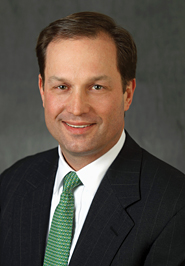Following recent comments by Securities and Exchange Commission Chair Mary Jo White about a pilot program allowing larger trading increments for smaller stocks, one of the industry’s largest market making firms is promoting a tick size plan of its own.
Speaking yesterday at a market structure conference sponsored by the Investment Company Institute, Mike Masone, general counsel for Citigroup’s equities division, said that his firm was supportive of such a pilot and was about to send the SEC a letter outlining a possible structure.

Importantly, Citi’s plan would not lead to wider spreads, according to Masone. “We shouldn’t be looking to widen spreads,” he told conference-goers, “where the spreads are already tighter than nickels or dimes.”
Chair White, speaking in Washington on October 2, at the Security Traders Association annual conference in Washington, D.C., told traders that she had instructed SEC staff to work with the country’s exchanges to develop a pilot program for trading certain small capitalization companies in increments greater than a penny. Such a plan could them be presented to the Commission, she said.
Behind all the discussion about tick sizes is the Jumpstart Our Business Start-ups Act of 2012. The goal of the act is to foster an environment more conducive to initial public offerings, which could lead to an increase in employment opportunities. There is concern in some quarters that the decline in IPOs in the last decade is bad news and reflects adverse structural changes in the marketplace.
As part of the multi-faceted JOBS Act, the SEC is required to examine the impact of decimalization-which cut the minimum trading increment from 6.25 cents to a penny-and consider an increase in tick sizes for smaller companies. The Commission has been holding roundtables to discuss the issue, but has not taken any action.
Pressure on the SEC to act is coming from Congress in the form of several bill proposals. Most recently, Wisconsin Republican Sean Duffy has indicated he would introduce a bill to mandate a pilot program.
Citi’s proposal is three-pronged. It would create three groups of emerging growth company stocks, or those with less than $1 billion in revenues, and apply different quote and trading rules to them. Any pilot would last no longer than a year, but could be extended for another year if the data was inconclusive.
For the first group of stocks, traders could only quote and trade in the same increment. For the second group, market centers could also allow trading at the midpoint of the bid-ask spread. For the third group, market makers, such as wholesalers, would be permitted to trade at any point in between the spread.
Each group would contain between 100 and 200 securities, Masone noted. The executive did not mention the size of any new trading increment, but the SEC is considering a range of between two cents and nine cents.
The goal of any pilot is to encourage market makers to quote more aggressively and increase liquidity in these less liquid names. That, in turn, is expected to give investors confidence to trade the securities. Any market making profits that accrue from the trading are expected to lead to a greater spend on research, which could further generate interest in the names.
Masone noted that any pilot would be unlikely to result in dealer firms increasing their research budgets. That could take years, he said, and would only happen if the pilot became permanent.
Citigroup operates one of the largest market making firms in the industry through its ATD unit. Together with firms such as Citadel, KCG Holdings, and UBS, it dominates the wholesale market making business in which firms execute trades for retail brokers.
Those opposed to increasing the tick size fret that such a move would increase their trading costs. Masone stated that any proposal should not be applied to stocks with tight spreads. “In Citi’s view, the pilot should be geared to those issuers of a certain size whose shares trade in nickels or dimes already,” Masone said.
For a good chunk of stocks, spreads are already wide, according to one industry pro. Bob Minicus, a senior vice president and head of global equity trading at Fidelity Management & Research Company, also spoke at the ICI confab. He said that 40 percent of all symbols have spreads that are 40 basis points wide, despite the fact that they trade in penny increments.
In the past, Fidelity has indicated its opposition to widening ticks because that could lead to higher trading costs for retail investors.
At yesterday’s conference, Minicus did not openly oppose a pilot but did note that he was skeptical it would be effective. Smaller capitalization stocks trade infrequently, he said, and no increase in the tick size would change that.
“You just can’t make these stocks trade,” Minicus told the crowd.
The executive is also skeptical that market makers will suddenly flock to these names if ticks are increased because they trade infrequently and it is difficult for them to hedge their risks. “They are not very highly correlated to each other or to an index,” Minicus explained.




